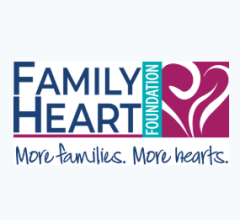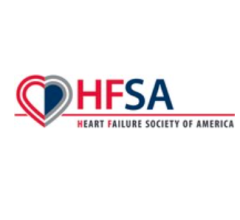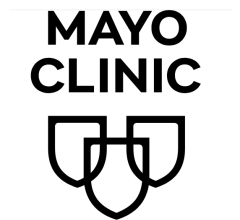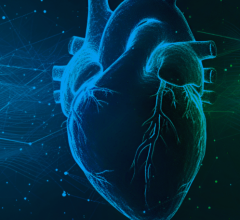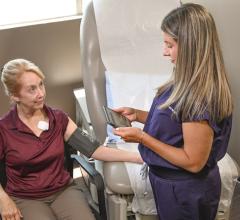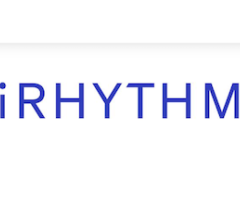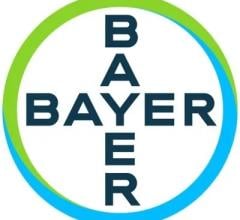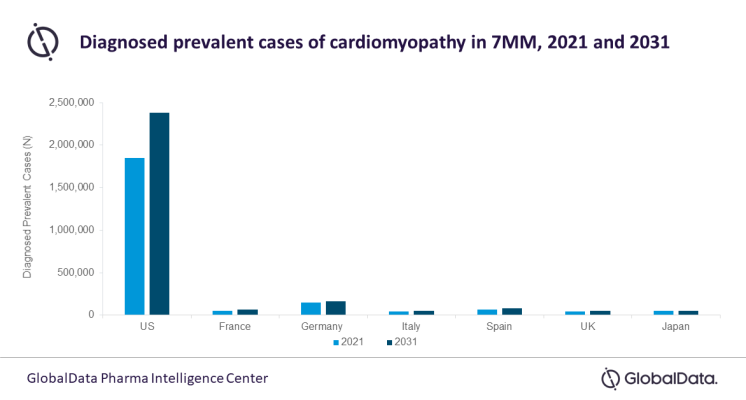
July 19, 2022 — Research by GlobalData has highlighted the startling difference between the forecast number of diagnosed cardiomyopathy cases in the US, compared to other countries in the 7MM*.
The leading data and analytics company’s report, ‘Cardiomyopathies Epidemiology Analysis and Forecast, 2021-2031’, notes that the US will have the highest number of diagnosed prevalent cases of cardiomyopathies in 2031, at over 2.3 million. This represents 83% of the total cases in the 7MM**, with the next closest countries being Germany (5.7%) and Spain (2.9%).
Cardiomyopathy is a general term for a collection of diseases that affect the heart muscle. The walls of the heart are thickened or stretched, reducing its ability to pump blood around the body and can lead to heart attack. Risk factors range from family history to diabetes, alcohol consumption, obesity and high blood pressure.
Walter Gabriel, MPH, Epidemiologist at GlobalData, explains: “Even if we compensate for the differences in population size, as in the chart below, the US is still miles ahead when it comes to total cardiomyopathy cases. In a way, this is no surprise. The number of type II diabetes cases in the US is expected to annually rise by 1.8% to over 20.8 million cases by 2028, while high blood pressure is also expected to annually rise by 0.95%, from to over 65 million diagnosed cases in 2027. These are key risk factors for cardiomyopathy. While it is not new to say that the US has challenges with obesity, visuals like this can often be useful to highlight the impact that those with unhealthy lifestyles are having on the healthcare industry.”
Another contributing factor to the US’s high numbers is the lack of robust epidemiological data. The main forms of cardiomyopathy are dilated cardiomyopathy (DCM), hypertrophic cardiomyopathy (HCM), restrictive cardiomyopathy (RCM), and arrhythmogenic right ventricular cardiomyopathy (ARCM).
Gabriel continues: “When forming our report, we found that epidemiological data pertaining to these specific forms of cardiomyopathy were incomplete for many markets, therefore we had to assume that the ratio of cardiomyopathy subtypes were similar between markets with missing data. This resulted in the US having many additional cases of cardiomyopathy due to its high prevalence of HCM. The lack of market specific data make it difficult for countries to predict the burden of cardiomyopathies and thus our report helps to fill a critical knowledge gap.”
Another metric, the split between familial (inherited) and acquired cardiomyopathies (where the patient develops cardiomyopathy as a result of another condition or factor) also places the US figures in stark contrast to nearly every other country in the 7MM. The US proportion of acquired cardiomyopathies is double that of inherited whereas in the rest of the 7MM is broadly an even split.
Gabriel concludes: “The high proportion of acquired cases of cardiomyopathy in the US may be attributed to a high number of individuals engaging in lifestyle factors that place them at a higher risk of developing cardiomyopathy. These factors include but are not limited to diet, drinking alcohol, and a lack of exercise. On an individual basis, cardiomyopathy increases the risk of sudden cardiac death and thus it is important for individuals with these risk factors to be assessed for potential cardiovascular complications frequently.”
* 7MM: The US, Japan and the 5EU (France, Germany, Italy, Spain and the UK)
** Research conducted on the 7MM - dilated, hypertrophic, restrictive, or arrhythmogenic cardiomyopathy types included
*** 5EU: France, Germany, Italy, Spain and the UK
For more information: www.globaldata.com


 October 28, 2025
October 28, 2025 

